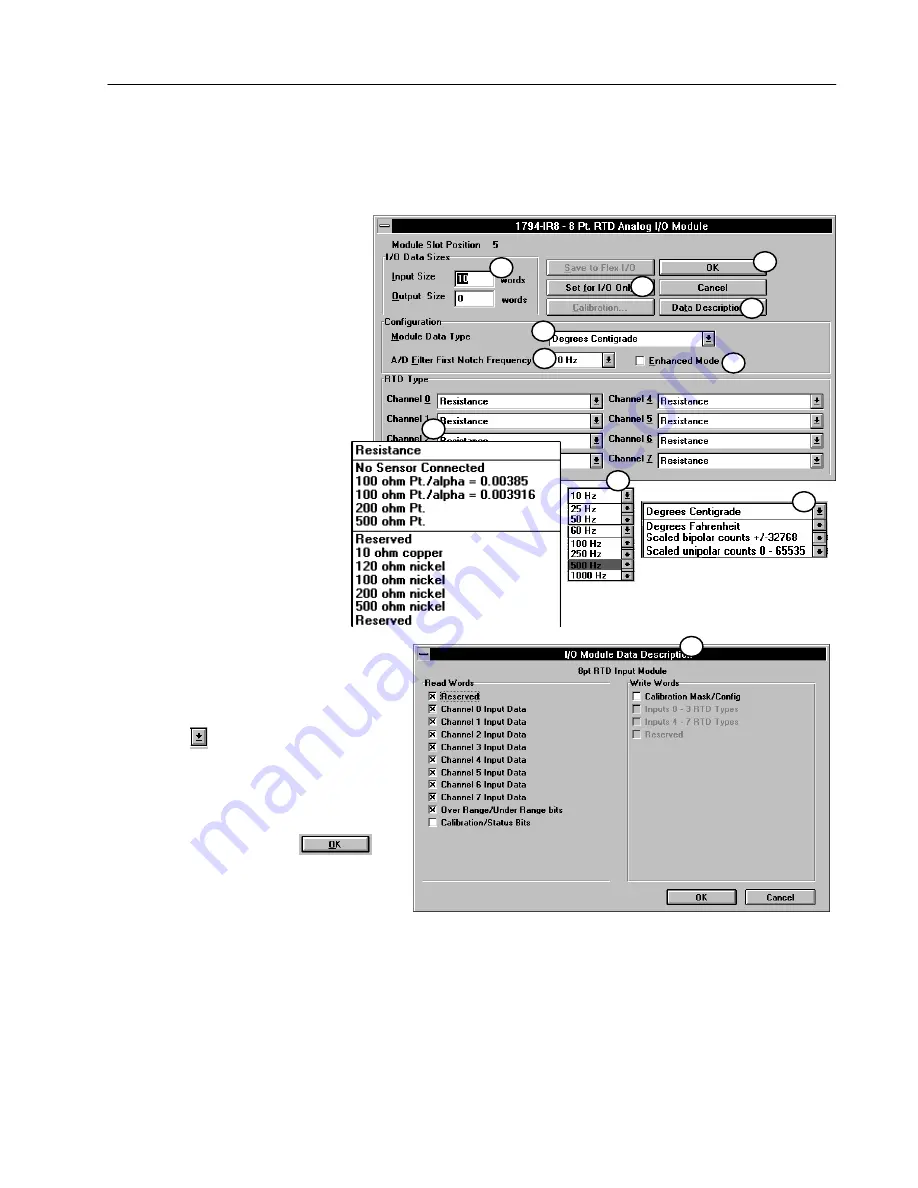
3–11
Configuring Your DeviceNet Adapter Offline
Publication 17946.5.5 - October 1996
Configure Slot 5
The sixth module (slot 5) in the example is a 1794-IR8 RTD analog
output module. This module has the following selections:
When you are off line, I/O data size comes up in a
default mode.The default sizes are optimal
settings. If you do a load from file," the sizes are
the stored sizes previously sent to file.
Changing the number of input (read)
words generates the amount of input and
status area mapped into adapter
memory. Changing the amount of output
(write words) causes the adapter to
expect more output/configuration words
from the process.
1. To specify the number of input and output
words, place the cursor in the box and
backspace to delete. Enter the desired
selection.
3. Select the module data type by clicking
on the list box. A list of types is displayed
(3a). Click on the desired module data
type to select.
4. Select the desired filter first notch frequency by
clicking on the list box. A list of frequencies is
displayed (4a). Select the desired frequency by
clicking on that selection.
8. This module has an enhanced mode of operation.
In the enhanced mode, inputs are compared
against a known, precision resistor to determine
the value of the RTD. Since this is performed each
scan, module throughput is decreased.
5. Select the type of RTD for each channel using
the list box for selection of each type.
Click on the desired RTD to select.
7. If you change the settings, when all selections are
complete, click on the OK button.
2. The Data Description" button brings up a
screen (2a) which shows which input and
output words are being used. Clicking on
the boxes will automatically select the
number of words used. After selection, click
on the OK button to return to the module
configuration screen.
6
3
1
4
2
7
8
2a
3a
4a
5
6. The set for I/O only" button returns all I/O data size
settings to the optimal I/O settings for this module.






























